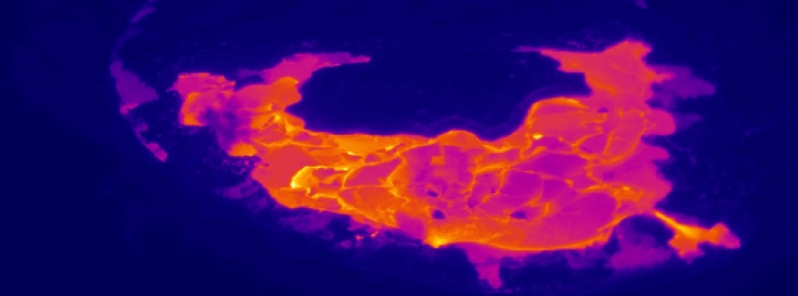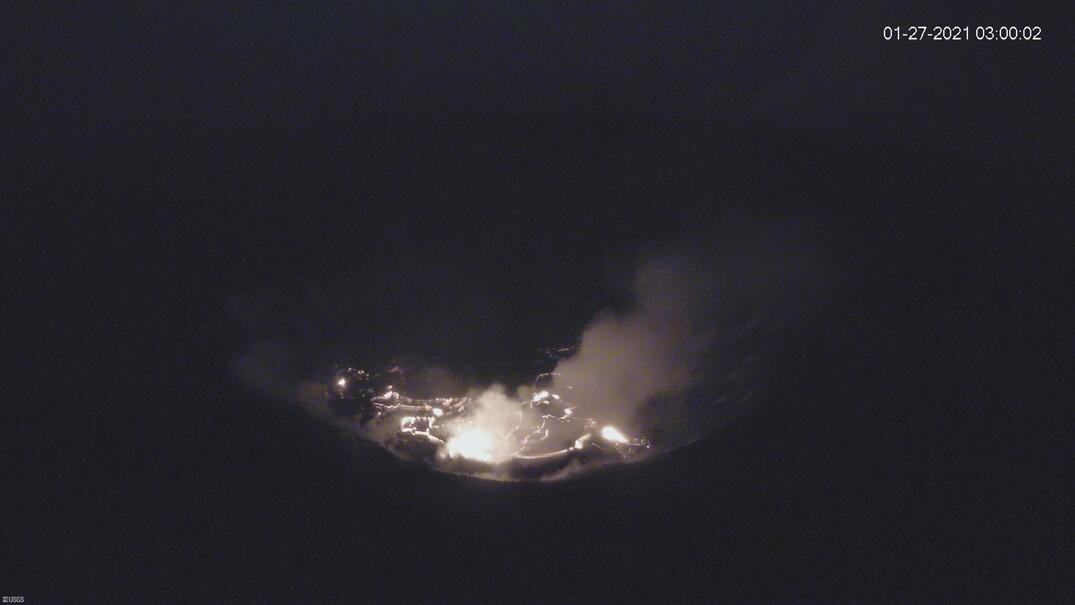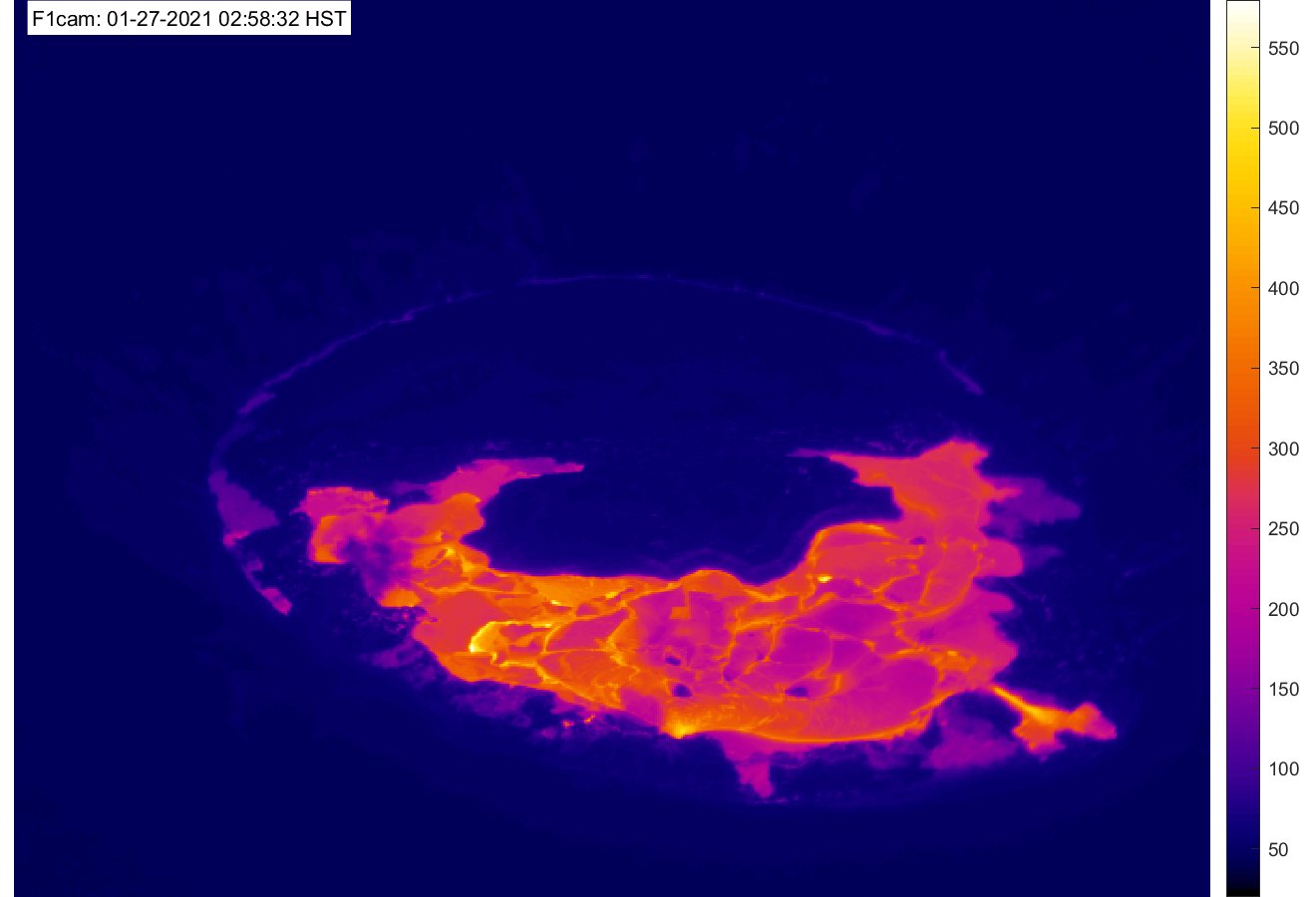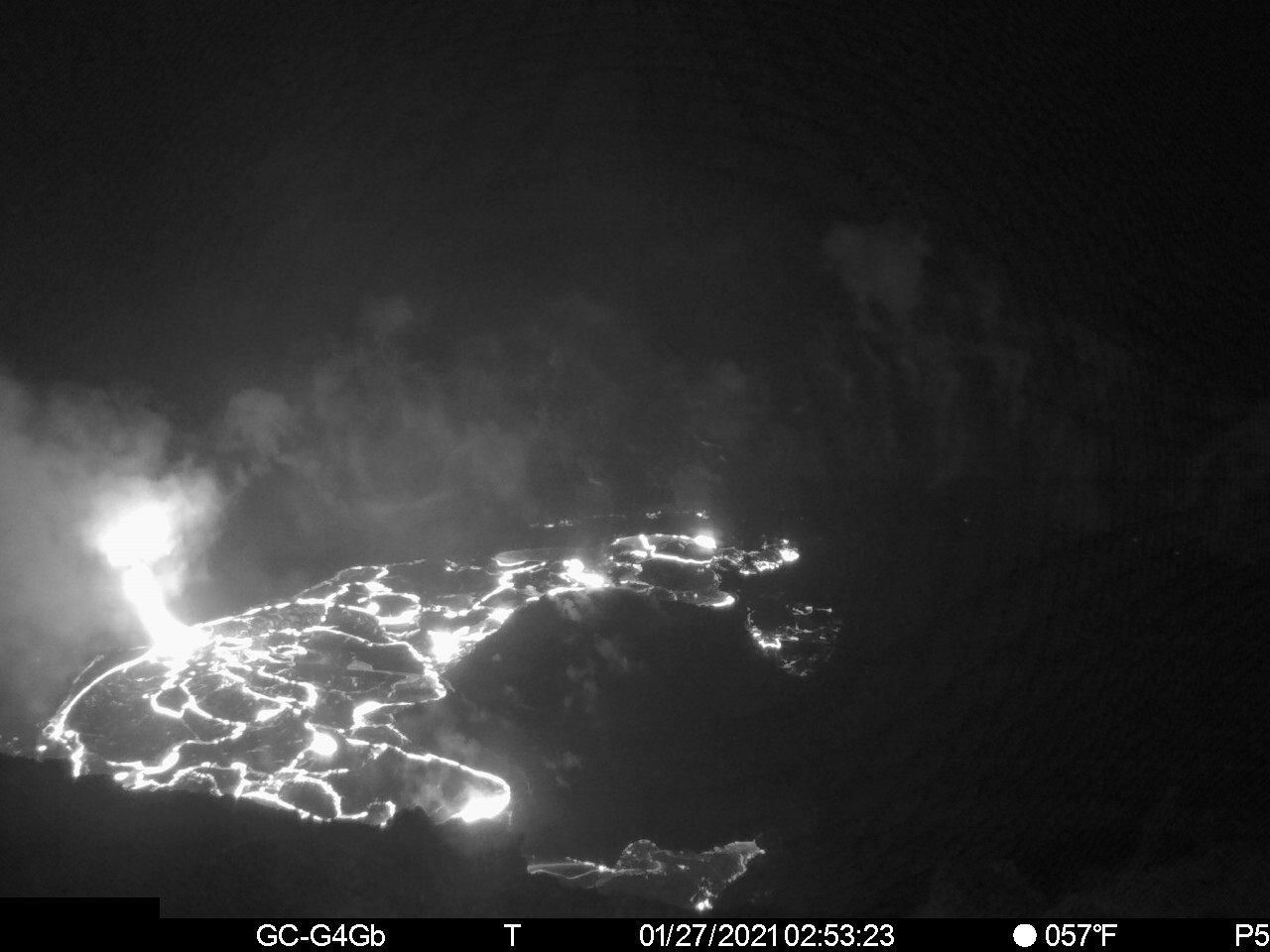Flames observed at Kilauea volcano, lava erupting from vents on NW side of Halemaʻumaʻu crater, Hawaii

Eruptive activity is ongoing at Hawaii's Kilauea volcano, with lava erupting from a vent on the northwest side of the crater. As of January 25, 2021, the lake was around 205 m (673 feet) deep, while SO2 emission rates remain elevated. The volcano is currently on Alert Level Watch alert level and Aviation Color Code Orange.
From January 23, the sulfur dioxide emission rate measurements are about 2 200 t/d, which is lower than the emission rates from the pre-2018 lava lake of 3 000 to 6 500 t/d.
Seismicity is elevated but stable, with steadily elevated tremblors and a few minor quakes, according to the U.S. Geological Survey's (USGS) update released on Tuesday, January 26.
Geodetic monitors show that the upper part of the East Rift Zone contracted, while the summit deflated. No seismic or deformation data are present to indicate that additional magma is moving into either of the volcano's rift zones.
SO2 and H2S emissions from Puʻu ʻŌʻō were below detection levels when measured on January 7.
Meanwhile, a low fountaining from the west vent supplies the lava pouring into the lake within the Halemaʻumaʻu lava crater.
"At the moment effusion rates correlate, positively, with Uwe tilt and RSAM activity; higher (inflationary) tilt and RSAM values, greater lava effusion," wrote USGS.
Flames have been observed numerous times at the western fissure in Halema‘uma‘u.
"We are not sure what the combusting gas is, but flames were observed numerous times in Halema‘uma‘u during the early 1900s lava lake."
Flames have been observed numerous times at the #Kilauea2121 western fissure in Halema‘uma‘u. We are not sure what the combusting gas is, but flames were observed numerous times in Halema‘uma‘u during the early 1900s lava lake. #LavaLake#Lava pic.twitter.com/aSFVvjobLy
— USGS Volcanoes (@USGSVolcanoes) January 25, 2021
Hazard analysis
USGS/HVO
High levels of volcanic gas, rockfalls, explosions, and volcanic glass particles are the main hazards of concern. Huge amounts of volcanic gas, primarily water vapor (H2O), carbon dioxide (CO2), and sulfur dioxide (SO2)—are continuously emitted during eruptions of Kilauea.
As SO2 is spewed from the summit, it will react in the atmosphere with oxygen, sunlight, moisture, and other gases and particles, and will convert to fine particles within hours or days.
The particles scatter sunlight and cause the visible haze that has been observed downwind of the volcano known as volcanic smog or vog, during previous summit eruptions.
Vog creates a potential for airborne health dangers to people, damages to plants and agricultural plants, and affects livestock operations. Rockfalls and minor explosions, such as the ones that occurred during the 2008–2018 lava lake eruption at Kīlauea summit, may suddenly occur and without warning.
This underscores the extremely hazardous nature of the Kīlauea caldera rim surrounding Halemaʻumaʻu crater, an area that has been closed to the public since late 2007.
Pele's hair and other lightweight volcanic glass fragments from the lava fountains within Halemaʻumaʻu will fall downwind of the fissure vents and lava lake, dusting the ground within a few hundred meters of the vent.
High winds may waft lighter particles to greater distances. Residents are urged to minimize exposure to these volcanic particles, which can cause skin and eye irritation similar to volcanic ash.
Near-real time webcam views
Active as of January 27, 2021
Halemaʻumaʻu, lava lake, and down-dropped block [KWcam]

Thermal image of Halemaʻumaʻu and lava lake [F1cam]

Halemaʻumaʻu crater and lava lake [S1cam]

Geological summary
Kilauea volcano, which overlaps the east flank of the massive Mauna Loa shield volcano, has been Hawaii's most active volcano during historical time.
Eruptions of Kilauea are prominent in Polynesian legends; written documentation extending back to only 1820 records frequent summit and flank lava flow eruptions that were interspersed with periods of long-term lava lake activity that lasted until 1924 at Halemaumau crater, within the summit caldera.
The 3 x 5 km (1.9 x 3.1 miles) caldera was formed in several stages about 1500 years ago and during the 18th century; eruptions have also originated from the lengthy East and SW rift zones, which extend to the sea on both sides of the volcano.
About 90% of the surface of the basaltic shield volcano is formed of lava flows less than about 1 100 years old; 70% of the volcano's surface is younger than 600 years.
A long-term eruption from the East rift zone that began in 1983 has produced lava flows covering more than 100 sq km (37 sq miles), destroying nearly 200 houses and adding new coastline to the island. (GVP)
Featured image credit: Hawai'i Volcanoes National Park

I am still learning geology in the sense of measurements. I was wondering what the co’2 emissions and other gasses in this and other volcano were in comparison to things like cars, electrical plants, and such. People probably do not recognize that this activity is also affecting global changes. Thanks